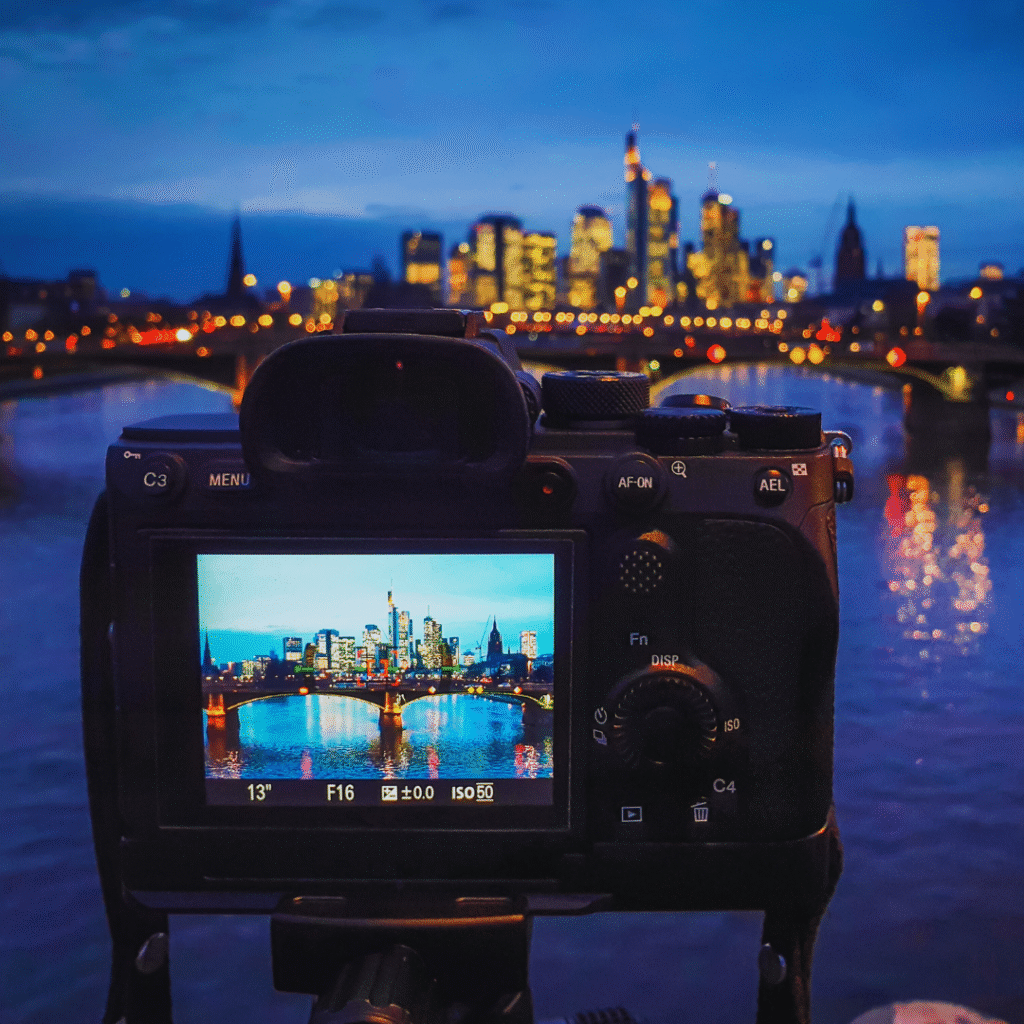Capturing the vibrant lights of a city at night presents a unique challenge and exciting opportunity for photographers. With the right techniques, it becomes possible to transform ordinary scenes into stunning visuals. Utilising a tripod, adjusting camera settings, and understanding composition are key elements to successfully capturing cityscapes after dark.
Night photography requires careful consideration of factors such as exposure, aperture, and ISO settings. Learning to balance these elements can help create images that not only highlight the city’s illumination but also convey its atmosphere. Experimenting with different angles and perspectives can result in captivating photographs that draw the viewer in.
As urban environments offer a myriad of subject matter, there is no shortage of inspiration. From iconic landmarks to bustling streets, each location has its own unique character at night. Embracing these tips will allow photographers to effectively capture the essence of a city illuminated by night.
Essential Equipment and Preparation
To capture stunning night scenes filled with city lights, selecting the right equipment and preparing adequately are crucial. This section covers essential gear, from cameras and lenses to stabilising tools and practical safety tips.
Choosing the Right Camera and Lenses
A digital camera with manual settings is ideal for night photography. Mirrorless and DSLR cameras offer versatility in both exposure time and ISO settings.
For lenses, a fast wide-angle lens performs best in low light, allowing for more light intake. Look for apertures of f/2.8 or wider. A wide-angle lens captures expansive cityscapes effectively. The ability to focus on details while encompassing a broader scene can elevate compositions significantly.
Stable Supports: Tripods and Accessories
A sturdy tripod is essential for preventing camera shake during long exposures. It allows for stability, maintaining clarity in images.
Choose a tripod rated for your camera’s weight to avoid accidents. Accessories like a tripod head can provide additional adjustments. For varied angles, a flexible tripod might be useful. Ensure the tripod legs are securely positioned on solid ground to prevent toppling, especially when photographing busy intersections with car headlights creating dynamic light patterns.
Remote Shutter Release and Self-Timer
A remote shutter release eliminates vibrations caused by pressing the camera’s button. This tool enables longer exposures without the risk of movement, essential for night photography.
If a remote is unavailable, the self-timer function serves as an effective alternative. Set it to two seconds to allow the camera to stabilise before capturing the shot. Both methods preserve image sharpness, enabling crisp detail in the city lights.
Safety and Practical Considerations
Safety is paramount during night photography. Always scout locations in advance for potential hazards, especially in urban settings where vehicle traffic is high.
It is wise to bring a friend along for added safety. Being aware of your surroundings, especially in dimly lit areas, helps to prevent accidents. Carry essential gear in a secure bag. Consider a small light source for navigating dark locations or adjusting equipment. Staying alert and prepared ensures a successful photographic experience.
Mastering Camera Settings for Night City Photography
Successful night city photography relies on understanding critical camera settings. Correctly balancing the aperture, ISO, and shutter speed is essential for capturing vibrant city lights. Knowledge of manual mode and long exposures alongside optimal white balance settings will yield stunning results.
Understanding the Exposure Triangle
The exposure triangle consists of three main components: aperture, ISO, and shutter speed. Each element plays a vital role in achieving the desired exposure.
- Aperture: Measured in f-stops, the aperture controls the amount of light entering the lens. A lower f-stop (e.g., f/2.8) allows more light, suitable for low-light conditions.
- Shutter Speed: This determines how long the sensor is exposed to light. A slower shutter speed lets in more light, ideal for night scenes but can cause motion blur.
- ISO: Higher ISO settings increase the sensor’s sensitivity to light. However, excessively high ISO can introduce noise, compromising image quality.
Balancing these three settings is crucial for optimal exposure.
Setting Aperture, ISO, and Shutter Speed
Choosing the right aperture, ISO, and shutter speed is key for night photography. For capturing sharp city lights, he recommended using an aperture around f/8 to f/11. This setting provides a deeper depth of field.
When adjusting ISO, a starting point of 400 is useful. This setting often provides a balance between light capture and noise reduction. Higher ISO settings may be necessary for extremely low-light conditions, but care should be taken to avoid excessive noise.
Shutter speed selection can vary significantly. A shutter speed of 1/20 to several seconds is typical for night scenes. Using a tripod helps stabilise the camera and prevent blur during longer exposures. A shutter release can minimise camera shake, enhancing image clarity.
Manual Mode and Long Exposures
Manual mode gives photographers full control over camera settings, vital for night photography. This allows adjustments that can be tailored to the specific conditions of cityscapes.
Long exposures are particularly effective for capturing city lights. To create stunning light trails from moving vehicles or smoother water surfaces, he should use shutter speeds from 1 second to several minutes, depending on the subject.
The use of a tripod is essential for stability during long exposures. Additionally, using a remote shutter release or timer can prevent camera shake. These techniques lead to crisp images, highlighting the city’s vibrant atmosphere.
Optimising White Balance
Selecting the right white balance is crucial for achieving accurate colour representation in night photography. Urban environments can have various light sources, often leading to colour casts.
For street lights, setting the white balance to “Tungsten” can counteract the yellow tones typical of sodium vapour lamps. Alternatively, using the “Auto” white balance can work well, as modern cameras adjust effectively in low light.
Experimenting with manual white balance settings may yield better results, depending on the specific lighting conditions. Shooting in RAW format also allows flexibility in post-processing, enabling adjustments to white balance without compromising image quality.
Creative Night Photography Techniques
Night photography offers unique opportunities to capture vibrant cityscapes and intricate light patterns. Several techniques can enhance the visual appeal and quality of images taken in low-light conditions. Techniques such as capturing light trails, using available light, experimenting with light painting, and minimising noise are vital for achieving stunning results.
Capturing Light Trails and Motion Blur
To create dynamic images that convey movement, photographers can capture light trails. This technique involves using a long exposure to record the movement of light sources, such as car headlights or streetlights.
Tips for capturing light trails:
- Use a tripod: Stability is crucial for long exposures, preventing unwanted blurriness.
- Select a slow shutter speed: Start with a shutter speed of 1-10 seconds, adjusting as necessary based on the scene’s brightness.
- Compose the shot: Position the camera to include leading lines, enhancing the sense of movement in the image.
Motion blur can also be effectively used for creative effect. By intentionally moving the camera while the shutter is open, the photographer can create an abstract interpretation of a scene.
Utilising Available and Ambient Light
Maximising the available and ambient light can vastly improve night photography. Streetlights, neon signs, and even the moon can act as natural light sources, creating a unique atmosphere.
Strategies for effective utilisation:
- Understand the scene’s light sources: Identifying which light sources are most effective for your composition helps in planning your shots.
- Adjust ISO settings: A higher ISO can allow for greater sensitivity to low light, but excessive noise may occur. Experiment to find a balance.
- Shoot in RAW format: This provides greater flexibility in post-processing, allowing for effective adjustments without quality loss.
Pay attention to how light interacts with different surfaces for added depth and interest in images.
Light Painting and Experimental Effects
Light painting is a creative technique in which a photographer uses handheld light sources to illuminate objects or scenes during a long exposure. This method can produce stunning and imaginative images.
Key points for light painting:
- Choose the right tools: Use flashlights, sparklers, or other LEDs for varied effects.
- Plan your composition: Visualise where to place light sources to ensure they enhance the image.
- Experiment with settings: A longer exposure time (10-30 seconds) allows for creativity without rushing the process.
Other experimental effects, such as adding filters or shooting through textured glass, can also give a unique perspective.
Minimising Noise and Enhancing Image Quality
Noise can be a significant issue in low-light photography. It often detracts from image quality and clarity.
Techniques to minimise noise:
- Use a low ISO setting: Start as low as possible and increase only when necessary.
- Enable long exposure noise reduction: Many cameras have settings to help mitigate noise during long captures.
- Post-processing methods: Noise reduction software or tools can significantly enhance the final image during editing.
Ensuring the highest image quality not only improves the visual result but also leads to more satisfactory prints and displays.
Composition and Post-Processing for Striking Cityscapes
Effective composition and thoughtful post-processing are crucial for creating striking cityscape photographs. By understanding how to frame images, incorporate elements, and enhance them digitally, a photographer can elevate their work significantly.
Effective Framing and Leading Lines
Framing is essential in directing the viewer’s eye. Photographers can use buildings, bridges, or trees to create a natural frame around the subject. Keeping the horizon straight and aligning key elements with the rule of thirds adds visual interest.
Leading lines guide the viewer’s gaze towards points of interest. Streets, pathways, or lines of light can serve as effective elements. They create depth, making cityscapes more engaging. Experimenting with different angles can reveal unique perspectives that enrich the composition.
Incorporating Foreground Elements and Reflections
Including foreground elements adds context and depth to photographs. Objects such as street furniture or urban flora can create layers, drawing the viewer into the scene. They provide visual balance while emphasising the vastness of the city.
Reflections in water or glass surfaces can dramatically enhance the image. They introduce symmetry and intrigue. Capturing reflections at dusk or dawn, when city lights come alive, can produce captivating results. Patience is key; waiting for the ideal moment can yield the most compelling compositions.
Balance of Shadows and Highlights
Managing light is critical in night photography. Shadows can create drama while highlights add sparkle. Identifying areas of strong contrast allows for a more dynamic image.
Using a tripod can help maintain stability, allowing for longer exposures that capture light trails. It’s important to avoid overexposing highlights, ensuring detail in bright spots. Shadows can also be manipulated in post-processing to enhance depth, making the scene more three-dimensional while maintaining balance throughout the composition.
Post-Processing Techniques
Post-processing is where a photograph transforms into art. Adjusting contrast can bring out details in shadows and highlights. Using software, photographers can selectively enhance colours, and sharpen details without losing quality.
Applying noise reduction techniques helps maintain image integrity, particularly in low-light conditions. Crop and straighten images to refine composition further. Experimenting with different styles can lead to unique interpretations of city landscapes, encouraging photographers to explore their creativity while enhancing their final images.

